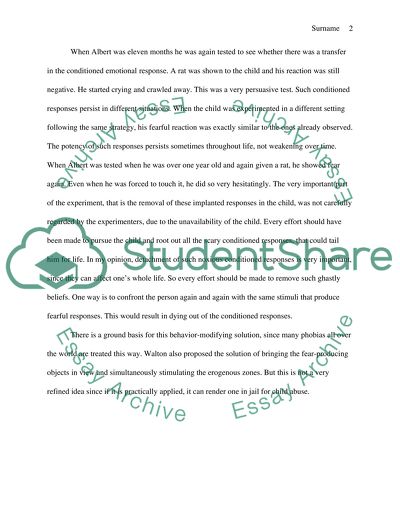Conditioned Emotional Response in Children Assignment. Retrieved from https://studentshare.org/psychology/1507848-conditioned-emotional-response
Conditioned Emotional Response in Children Assignment. https://studentshare.org/psychology/1507848-conditioned-emotional-response.


